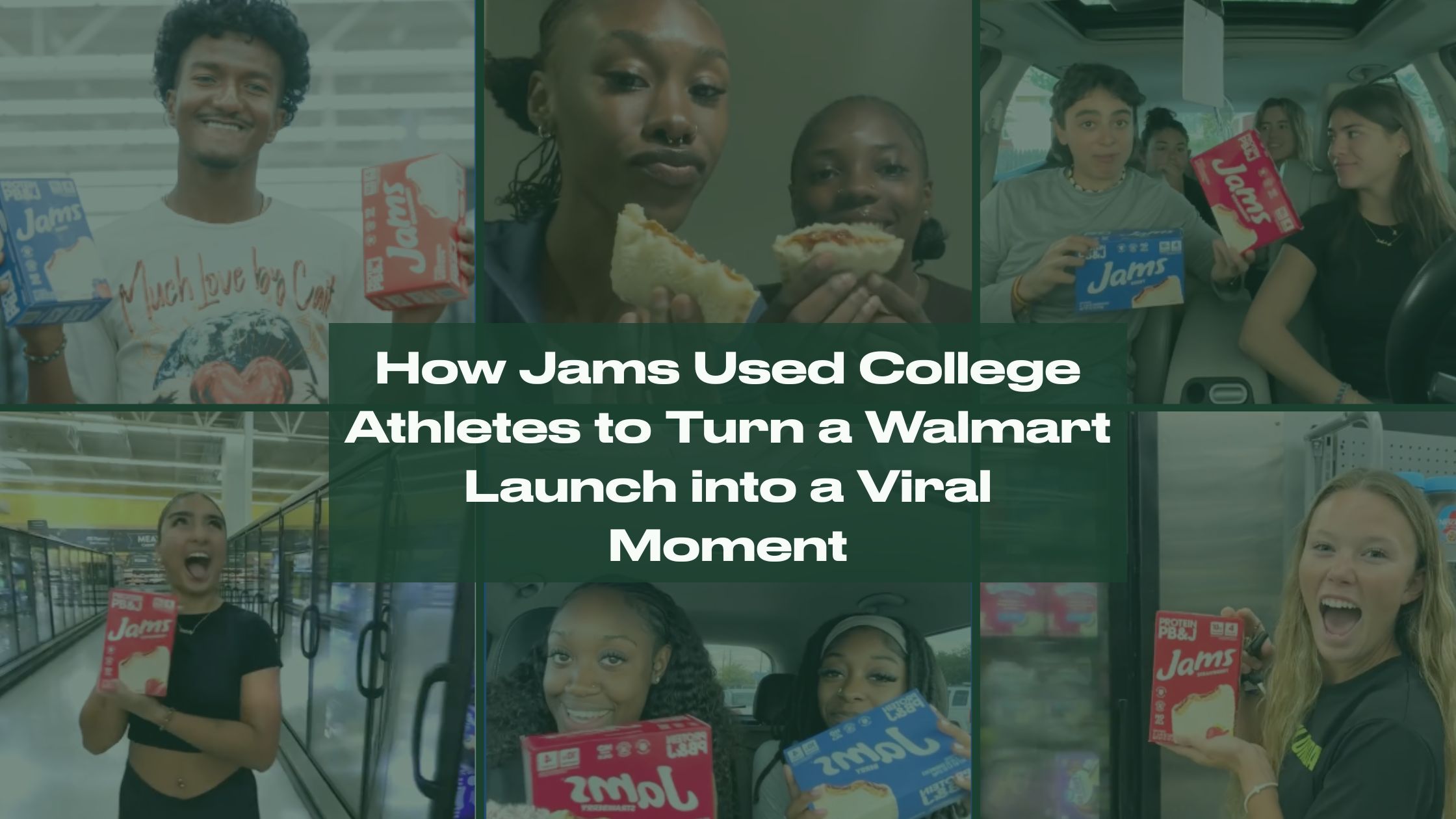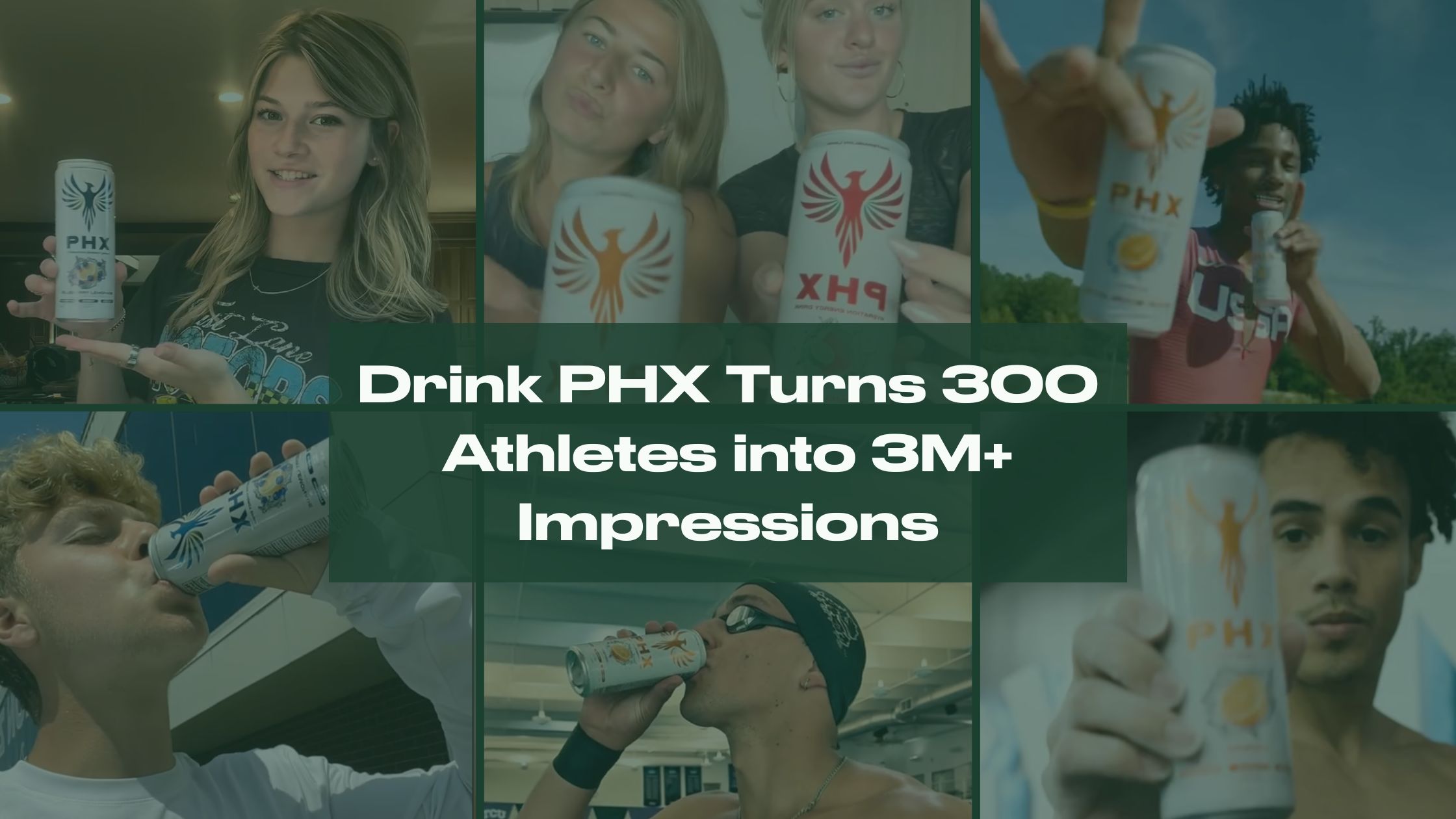.jpg)
MarketPryce's NIL Playbook for Athletes
🧠 MarketPryce NIL Playbook for Athletes
How to Win In NIL by Understanding What Brands Actually Want
🚀 Why This Playbook Exists
Most NIL advice is recycled: build your brand, post more, DM brands. That’s fine, but it won’t get you repeat, paid deals.
The athletes who win NIL know what brands actually care about. They think like partners, not posters. They create value, not just content. They build relationships, not transactions. And they stand out because they understand the person on the other side of the deal.
This playbook shows you how to do the same.
🔍 3 Things Brands Care About Most
Let’s start here. If you understand why brands are investing in athletes like you, you’ll be able to give them exactly what they’re looking for.
At MarketPryce, we don’t work with athletes with millions of followers. We don’t work with athletes who have agents. The average athlete on our platform has 5k followers across TikTok and Instagram. And guess what? That’s more than enough.
So why do brands want to work with athletes with just a few thousand followers?
1. 🎥 Content Is Everything
Brands love working with athletes because you create authentic content they can’t get anywhere else.
A video with 1K views that feels real beats a polished ad every time. Authenticity > everything.
You don’t need a ring light. You don’t need a script. You don’t need to be a professional creator.
Ask yourself: “How would I tell my best friend about this on FaceTime?”
Brian Wong, founder of Feel Goods, put it perfectly: “Athletes have authority on social that can’t be matched by any other influencer.”
Why? Credibility. You’re not just another person holding up a product — you’re a legit athlete performing at a level most people can’t touch. Running faster, lifting heavier, competing under pressure. That credibility gives your content built-in trust that no scripted ad can replicate.
2. 🗣️ Word-of-Mouth That Scales
Influencer marketing = word-of-mouth at scale.
As a student-athlete, you’re a trusted voice. Your opinion matters more than you think.
When you share products with your team, your trainer, your family — and they like it — tell the brand. That’s a win for them.
- “My coach asked where I got it.”
- “My teammates wanted more.”
- “My mom stole mine.”
3. 💸 Affiliate That Doesn’t Feel Like Ads
Nobody wants to see “USE CODE JASON20 FOR 20% OFF”. That screams ad.
Instead, treat it like a hook-up:
- Drop your code in your bio.
- Send it in your group chat.
- Share it when someone asks about your pre-workout.
Done right, affiliate feels like sharing a plug, not selling.
Especially with products you reorder often — energy drinks, skincare, protein, etc.
Even if just a few friends use your code each month, brands will want to keep you stocked.
✅ 5 Things Brands Love to See
Want to go from free product to paid partnerships? Here’s what brands consistently value most:
1. 📲 You Posted and Tagged Them
Simple, I know. But it’s so important.
If a brand sends you something, the best way to stand out is to post and tag them. That’s what 100% of brands are hoping for.
⚠️ Important: If you don’t love the product, don’t post. It will hurt your credibility — and your future deal potential (more on this later).
At MarketPryce, we tell brands: no strings attached. If you don’t like it, share honest feedback instead. That’s just as valuable.
2. 🎬 Content That Feels Like You
Don’t overthink it. Brands aren’t hiring actors — they’re looking for long-term partnerships with athletes.
- Drink it after practice? Film it in that moment.
- Love the taste? Eat three on camera — go full mukbang.
- Repping gear on campus? Get a clip with a voiceover.
Remember, authenticity always wins.
3. 🔁 You Posted Again — Without Being Asked
This is the move. If you’re still using the product a few weeks later, post again. Tag them.
Even without a new deal, that kind of loyalty makes brands pay attention. I’ve seen it lead directly to paid campaigns.
4. 📩 You Communicated
Student-athlete life is chaos. Brands get it.
But a quick DM like:
“Finals week is wild, I’ll get back to you next week!”
…goes a long way and is 1000x better than no response at all.
And don’t be afraid to follow up if they go dark. Relationships go both ways — the more reliable and easy you are to work with, the more brands will bring you back.
5. 🕵️ You Did Your Research
Here’s one of the smartest ways to stand out:
Look at what the brand is focused on right now.
- Check their Instagram and TikTok.
- Are they launching something new?
- Promoting a sale?
- Pushing a new product?
If you know what they’re working on, you can create content that fits their goals. That makes you relevant — not random.
Maggie Durnien, Marketing Manager at Drink PHX, puts it best: “The biggest red flag is when athletes don’t do their homework. Copy-paste captions, no personality, no interaction — you can tell right away. What really stands out is when athletes know the brand’s goals, engage in the comments, and bring their own personality into the content.”
That’s why adding little details about your life matters. If you tie their product into your niche — whether it’s waffles, law school, or volleyball practice — it hits harder than a generic plug.
Example DM to send:
“Hey! Saw you just launched a new sunscreen with all clean ingredients—I’m always on the hunt for brands who care what they put into their products and I play beach volleyball, so I’m in the sun all day. Would love to try it out and, if I love it, share it with my teammates and on social to lay the foundation for a potential longer-term partnership. Excited to hear from you!"
That puts you 10 steps ahead of every other athlete in their DMs.
🚫 4 Things Brands Don’t Want to See
Here’s where deals fall apart — sometimes without you even knowing.
1. 🤖 Forced, Fake Posts
You know the ones:
“Shoutout @brand for the products!”
…no context, no energy, no authenticity.
I’ve been on calls where a brand immediately nixed an athlete because their past content felt fake.
That one generic feed post you made $50 on? It could quietly kill your next $500 opportunity.
Your social feed is your NIL resume. Please treat it that way.
2. 💰 Only In It for the Money
Getting paid is great. You deserve it.
But if your first message is “What’s the rate?”, it gives the wrong impression. Brands want people who actually believe in their product.
Show value and passion first. Ask to try their product before committing to a post. That’s what leads to longer-term partnerships — and better paychecks down the road.
3. 🙃 One-Post “Thank You” Stories
A single story that says “Thanks @brand” is fine — but it can’t be the only thing you do.
Want to stand out? Try:
- An unboxing video.
- A reaction after trying it.
- Sharing what you loved about it.
Every post should either educate, entertain, or inspire. A one-line thank you usually does none of those.
If the brand wanted a generic shoutout, they’d buy a billboard. They came to you for something real.
4. 🛑 Negotiating Before You Try It
Saying “I don’t post unless I get paid” before trying the product is an instant red flag.
Better approach:
“Happy to try it first — no post guaranteed, but I’ll share feedback and we can talk if it’s a good fit afterward.”
No brand should say no to that. If they do, they’re probably not a great partner to work with.
🎯 Final Word
You don’t need millions of followers or pro equipment. You just need to:
- Be yourself
- Communicate
- Think like a brand
Act like a partner, not a one-off post. Keep showing up. That’s how you win with NIL.



